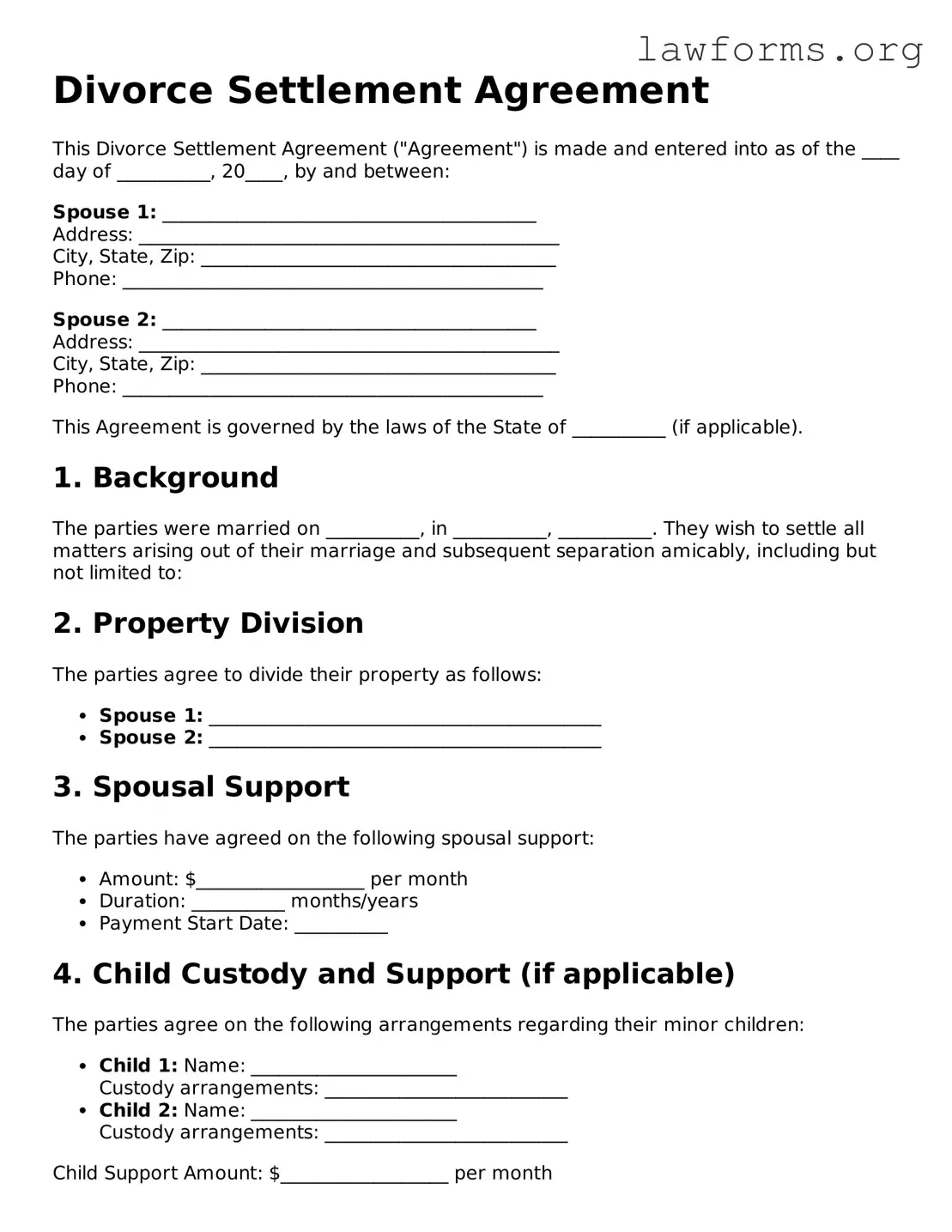Divorce Settlement Agreement
This Divorce Settlement Agreement ("Agreement") is made and entered into as of the ____ day of __________, 20____, by and between:
Spouse 1: ________________________________________
Address: _____________________________________________
City, State, Zip: ______________________________________
Phone: _____________________________________________
Spouse 2: ________________________________________
Address: _____________________________________________
City, State, Zip: ______________________________________
Phone: _____________________________________________
This Agreement is governed by the laws of the State of __________ (if applicable).
1. Background
The parties were married on __________, in __________, __________. They wish to settle all matters arising out of their marriage and subsequent separation amicably, including but not limited to:
2. Property Division
The parties agree to divide their property as follows:
- Spouse 1: __________________________________________
- Spouse 2: __________________________________________
3. Spousal Support
The parties have agreed on the following spousal support:
- Amount: $__________________ per month
- Duration: __________ months/years
- Payment Start Date: __________
4. Child Custody and Support (if applicable)
The parties agree on the following arrangements regarding their minor children:
- Child 1: Name: ______________________
Custody arrangements: __________________________
- Child 2: Name: ______________________
Custody arrangements: __________________________
Child Support Amount: $__________________ per month
5. Debts
Each party agrees to be responsible for the following debts:
- Spouse 1's Debts: __________________________________________
- Spouse 2's Debts: __________________________________________
6. Miscellaneous
This Agreement is a complete and final resolution of all matters arising from the marriage. Both parties acknowledge that they have had the opportunity to consult with independent legal counsel before signing this Agreement.
7. Signatures
By signing below, both parties agree to the terms outlined in this Divorce Settlement Agreement.
Spouse 1 Signature: ____________________________ Date: ____________
Spouse 2 Signature: ____________________________ Date: ____________
